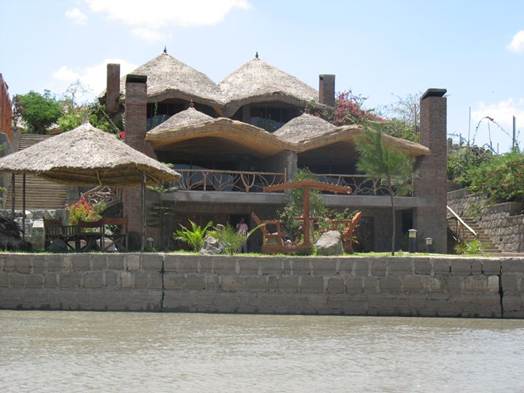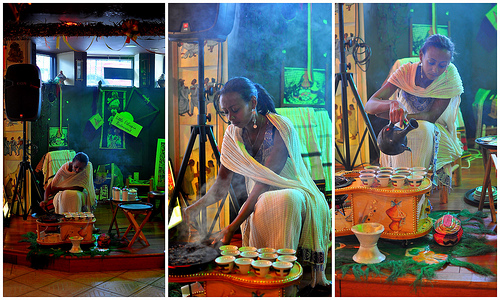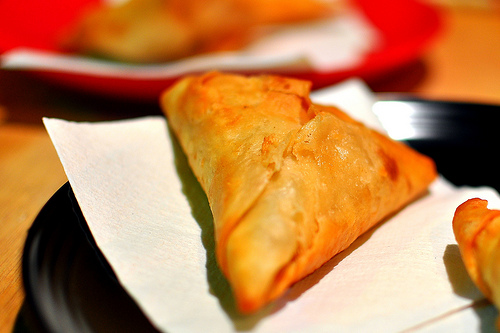Elizabeth Gilbert could have saved herself a
lot of Travelling if she’s gone to Ethiopia. In fact, it is a country with its
own calendar (it’s 2004 there) and clock, which means she could have added time
travel to her list of Experiences
Eat

At
Kuriftu resort & Spa at Debre Zeit
The biggest eye-opener and irony about
Ethiopia, that perennial synonym for famine and big-eyed, big-bellied babies,
is that you see none of that. At Kuriftu resort & Spa at Debre Zeit, 45
minutes outside Addis Ababa, I spotted mango, avo, citrus, banana and papaya
trees in the begetable garden – and I could tell that they were not in need of
much coaxing. At mealtimes, these fruits made up just a small portion of the
buffet and it was at breakfast that I met my new favourite drink: avo juice.
It’s all avo with none of that hothouse blandness; this is a country where much
of the food is by default organic and free-range. Along with the usual
suspects, the array of juices served with breakfast included the equally
interesting but more difficult to describe hibiscus juice.

Ethiopians love injera. Injera is eaten with almost every meal
The basic of every meal is injera, the
huge, soft traditional flatbread. The recipe calls for teff, a grain
that grows only in Ethiopia; three days’ patience while it ferments and an open
wood fire in a clay oven. The result is type-sized ‘pancakes’ that are torn in
strips with your right hand as you eat, and used as a spoon, fork and
mopping-up tool. (Because teff is not available in south Africa, the injera
served at Ethiopia restaurants here does not have the same yeasty, sour taste
and the colour is paler and less grey.)
Wot, a stew that
comes in varying degrees of hotness and is made with meat, is typically eaten
with the injera. At every meal we had a choice – chicken, beef, lamb or
goat – and the only risk factor was guessing how hot your wot would be. Even
the innocent-sounding chicken stew (doro wot) harbours hot peppers among
its key ingredients. Lentils, peas, chickpeas and peanuts are also used in many
dishes, usually with meat, except on fast days when gommen, a kale-like
plant, make up the basis of the alicha, a milder version of wot.

Outside the upmarket lodges, cafes serving
street food and St. George (the refreshing local beer) abound. In Addis Ababa
one out of every five or six shops is painted in St. George’s trademark bright
yellow and serves Ethiopian snacks and meals. Being aficr, visitors are
cautioned to avoid these or risk contracting the Ethiopian version of delhi
belly. (That said, I picked up my dose after a hamburger in the Sheraton
Hotel.) In the rowdy, noisy and busy Addis, a table on the stoep of one of
these cafes is the perfect vantage point for watching the world – and its
donkeys and goats – go by, St. George in hand, of course.

Sambusas,
The triangular parcels were filled with fried
beef, green peppers, jalapenos, and onions.
But it’s not all St. George and spicy
ethiopian cuisine. Thanks to the Italians who tried – and failed – to colonise
the country (it’s one of only two African countries that has never been
colonised), Addis has pizza and pasta restaurants aplenty. The Piazza
neigh-bourhood is where you’ll find many of them as well as what appears to be
a new wave of trendy shops. The neighbourhood is also known for Ristorante
Castelli, an upmarket Italian foodie spot on Mahatma Gandhi Street, that was
opened in 1948 by Francesco Castelli, an Italian soldier, and has changed
little in the intervening 70 or so years. We had cold tapas-like entrées
followed by various pasta dishes, all of them delicious and all served with
Ethiopian friendliness.
Food is cheap too: a meal with a drink in a
pretty decent restaurant can cost 30 Birr (R14) and although a bottle of good
old Two Oceans Sauvignon Blanc can set you back 250 Birr (R117), Ethiopian
Airlines serves the beautiful Barton & Buestier Châteauneuf-du-Pape in its
business class. (Because Addis is a magnet for government get-togethers and
NGOs, the wine lists at good restaurants are world-class.) Even so, I bought my
best meal in Ethiopia from a girl at the market in Addis: three lentil samoosas
at 1.50 Birr (70c) a piece.